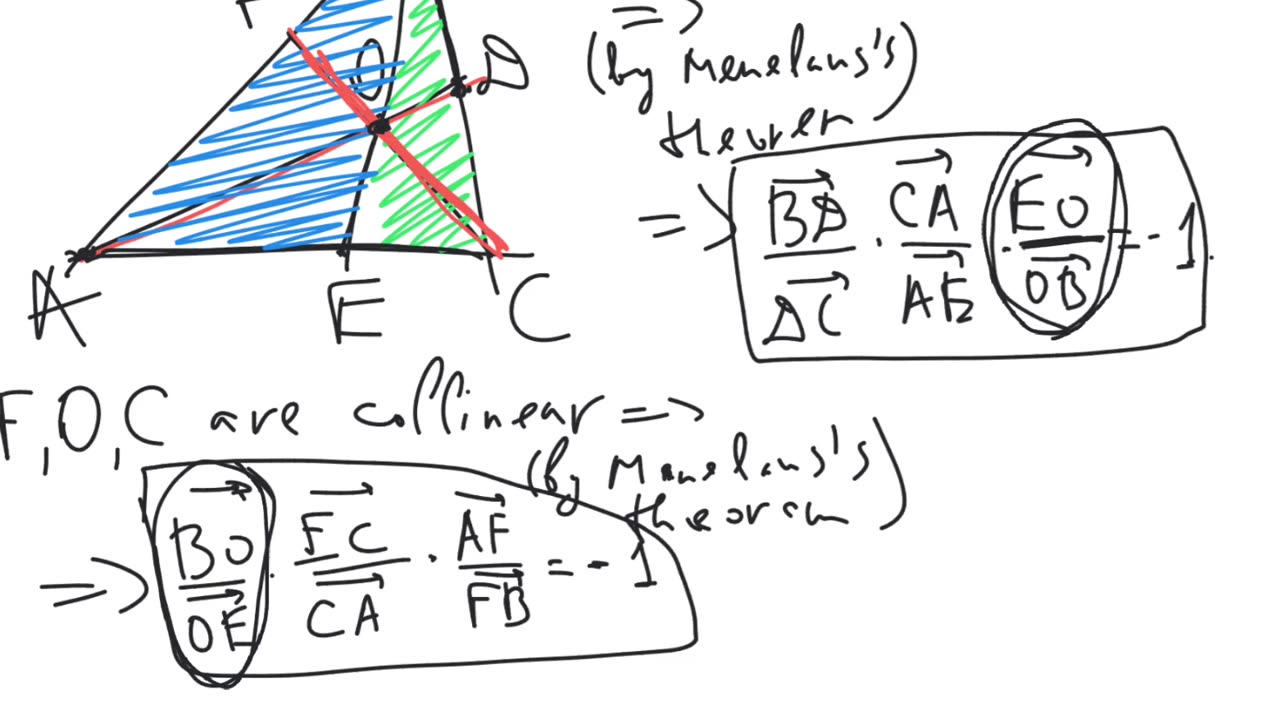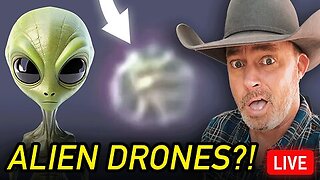Premium Only Content

Deriving Ceva's theorem from Menelaus's theorem | plane geometry | intermediate level
Episode 84.
Deriving Ceva's theorem from Menelaus's theorem | plane geometry | intermediate level.
Branch of mathematics: plane geometry.
Difficulty level: intermediate.
Ceva's theorem. Let $ABC$ be a triangle. Let $D$, $E$, $F$ be points on the lines $BC$, $CA$, $AB$ respectively. Then the lines $AD$, $BE$, $CF$ intersect at a single point or all 3 are parallel to each other if and only if $\frac{\overrightarrow{BD}}{\overrightarrow{DC}} \cdot \frac{\overrightarrow{CE}}{\overrightarrow{EA}} \cdot \frac{\overrightarrow{AF}}{\overrightarrow{FB}} = 1$.
Menelaus's theorem. Let $ABC$ be a triangle. Let $D$, $E$, $F$ be points on the lines $BC$, $CA$, $AB$ respectively. Then the points $D$, $E$, $F$ are collinear if and only if $\frac{\overrightarrow{BD}}{\overrightarrow{DC}} \cdot \frac{\overrightarrow{CE}}{\overrightarrow{EA}} \cdot \frac{\overrightarrow{AF}}{\overrightarrow{FB}} = -1$.
This video contains the proof of Ceva's theorem using Menelaus's theorem.
Mathematics. Geometry. Plane geometry.
#Mathematics #Geometry #PlaneGeometry
The same video on YouTube:
https://youtu.be/KyZlev9j--w
The same video on Telegram:
https://t.me/mathematical_bunker/108
-
 17:06
17:06
Sleep is CANCELED
18 hours ago10 SCARY Videos To Keep You Up All Night!
24.8K2 -
 2:37
2:37
Canadian Crooner
1 year agoPat Coolen | Let It Snow!
15.6K8 -
 2:44
2:44
BIG NEM
10 hours agoWhat's Really Behind the Fake Alpha Male Epidemic?
12.7K4 -
 57:20
57:20
State of the Second Podcast
7 days agoThe Inventor of Bump Stock Fights Back! (ft. Slide Fire)
8.6K3 -
 1:04:12
1:04:12
PMG
1 day ago $8.13 earned"I’ll be DRONED for Christmas!"
31K10 -
 23:38
23:38
RealitySurvival
1 day agoBest Anti-Drone Rounds For Self Defense
19K2 -
 57:43
57:43
barstoolsports
17 hours agoBest Shot Wins The Game | Surviving Barstool S4 Ep. 7
209K9 -
 1:52:24
1:52:24
Kim Iversen
12 hours agoLuigi Mangione Charged With TERRORISM | Liz Cheney Accused Of WITNESS TAMPERING, Faces 20 YEARS IN JAIL
114K148 -
 6:50:10
6:50:10
Akademiks
13 hours agoJay Z says he aint NEVER been friends w/ DIDDY! Bhad Bhabie lost her man? Travis Hunter Down Bad?
117K14 -
 2:27:04
2:27:04
AirCondaTv Gaming
12 hours ago $24.12 earnedWar Thunder - Tankering Around for That 10 Bomb
60.6K5